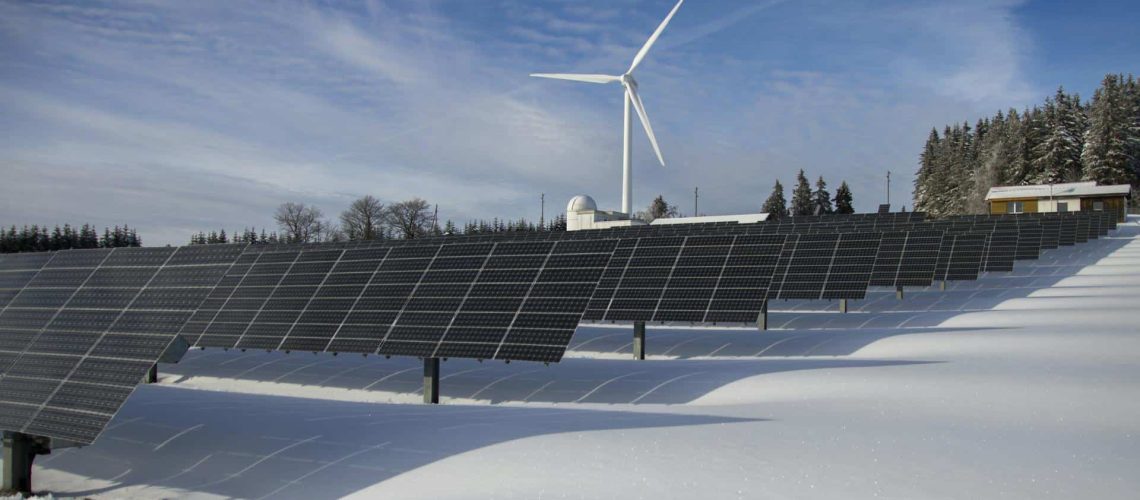The pressing need to transition away from fossil fuels and reduce greenhouse gas emissions has spurred significant research and development in the field of renewable energy sources. As societies worldwide seek cleaner and more sustainable energy options, alternative energy sources have gained prominence as viable alternatives to conventional power generation. Here we cover the environmental benefits and drawbacks of various renewable energy options, shedding light on their contributions to mitigating climate change, reducing air pollution, conserving natural resources, and addressing various environmental concerns.
Wind Energy
Wind energy is harnessed by converting the kinetic energy of wind motion into electricity through wind turbines. One of its most significant benefits is its potential to produce large amounts of electricity without releasing greenhouse gas emissions, significantly reducing carbon dioxide and other harmful pollutants. As a renewable resource, wind power offers a sustainable and virtually inexhaustible solution to energy demand, relying on an abundant and free natural resource – the wind. Furthermore, wind energy projects often provide local economic benefits and contribute to job creation in the renewable energy sector.
However, there are some environmental drawbacks associated with wind energy. Wind turbines may pose risks to birds and bats, leading to concerns about avian mortality in areas with high bird populations or migratory routes. Additionally, the visual impact of wind farms on landscapes and natural scenery is a point of contention in some regions, potentially affecting tourism and local aesthetics. Proper siting and environmental impact assessments are crucial to addressing these concerns effectively.
Solar Energy
Solar power harnesses energy from the sun using photovoltaic cells and solar thermal systems. Solar energy has a minimal environmental impact during the operation phase, emitting no pollutants or greenhouse gases, making it a clean and silent energy solution. It is particularly suitable for urban environments and sensitive ecosystems due to its non-intrusive nature. Moreover, solar panels have a long lifespan and are recyclable, contributing to a circular economy approach and reducing waste.
While solar energy has significant environmental benefits, there are also environmental considerations in the manufacturing and disposal processes of solar panels. These processes may involve hazardous materials and energy-intensive procedures, which need careful management and recycling efforts. Additionally, large-scale solar installations may require land use, potentially impacting natural habitats and agricultural land. However, advancements in solar technology and sustainable manufacturing practices are continually reducing these impacts.
Hydropower
Hydropower generates electricity by harnessing the kinetic energy of flowing water. It provides a reliable and consistent power source, offering base-load capacity and grid stability. Hydropower plants can store water in reservoirs, enabling energy production during periods of peak demand and acting as a virtual battery for the power grid. From an emissions perspective, hydropower has no direct greenhouse gas emissions during electricity generation, making it a valuable renewable energy source.
However, large-scale hydropower projects may have substantial environmental impacts. The construction of dams can lead to the displacement of communities and alter river ecosystems, affecting fish migration and water quality. Reservoirs can also result in the submergence of vast areas, leading to the loss of valuable land and wildlife habitats. Moreover, changes in river flow and sediment transport downstream of dams can have cascading effects on downstream ecosystems and coastal environments.
Geothermal Energy
Geothermal energy taps into the Earth’s heat for electricity generation and heating purposes. It is a reliable and continuous energy source, not subject to weather fluctuations, and offers a stable energy supply. Geothermal power plants emit negligible greenhouse gases and pollutants during operation, making them environmentally friendly and contributing to climate change mitigation.
Despite these benefits, certain geothermal projects might cause subsidence and induce seismic activity in some regions. Geothermal exploration and drilling activities may also impact local ecosystems and geothermal reservoirs, requiring careful environmental assessments and monitoring. Proper management and responsible development are essential to harness the full potential of geothermal energy while minimizing its environmental footprint.
Biomass Energy
Biomass energy involves converting organic materials, such as agricultural residues, wood waste, and organic matter, into biofuels and biogas. It can reduce waste and utilize otherwise discarded materials, contributing to a circular economy approach. Biomass offers a dispatchable renewable energy source that can be utilized for electricity generation, heating, and transportation.
However, the cultivation and harvesting of biomass for energy can lead to deforestation, habitat loss, and competition with food crops. Improper management of biomass resources may result in increased greenhouse gas emissions and air pollution, as well as soil degradation and nutrient depletion. Additionally, the sustainability of biomass energy heavily depends on responsible sourcing, efficient supply chains, and the use of waste materials rather than dedicated food crops.
Tidal and Wave Energy
Tidal and wave energy capture the movement of ocean tides and waves to produce electricity. They offer predictability and high energy density, providing a reliable and steady power source. Tidal and wave energy have the potential to contribute significantly to renewable energy portfolios, offering another pathway to reduce reliance on fossil fuels and combat climate change.
Despite their promise, tidal and wave energy deployment can have localized effects on marine ecosystems. The construction and operation of devices may impact marine life and habitats, causing changes in sediment transport and altering natural coastal processes. However, advancements in technology and the implementation of careful environmental impact assessments can help address these concerns and ensure responsible development.
Conclusion
Renewable energy technologies offer distinct environmental benefits and drawbacks, reflecting the complex and multifaceted nature of sustainable energy solutions. Wind and solar energy present compelling cases with minimal operational emissions, making them crucial pillars of sustainable energy. Hydropower and geothermal energy provide consistent and reliable power, but they demand careful consideration of their environmental consequences.
Biomass energy, though promising in waste reduction, necessitates careful resource management to avoid negative environmental impacts. Tidal and wave energy require further assessment of their impact on marine ecosystems. As the world strives for a sustainable future, a diversified mix of renewable energy resources, tailored to regional considerations and ecosystem preservation, holds the key to effectively combatting climate change and preserving our planet’s ecological balance. Continued research, innovation, and collaboration among stakeholders are crucial in optimizing these renewable technologies, ensuring a harmonious coexistence with the environment and fostering a sustainable energy future for generations to come. The collective efforts of governments, industries, and individuals in embracing renewable energy will pave the way for a greener, cleaner, and more sustainable world.




